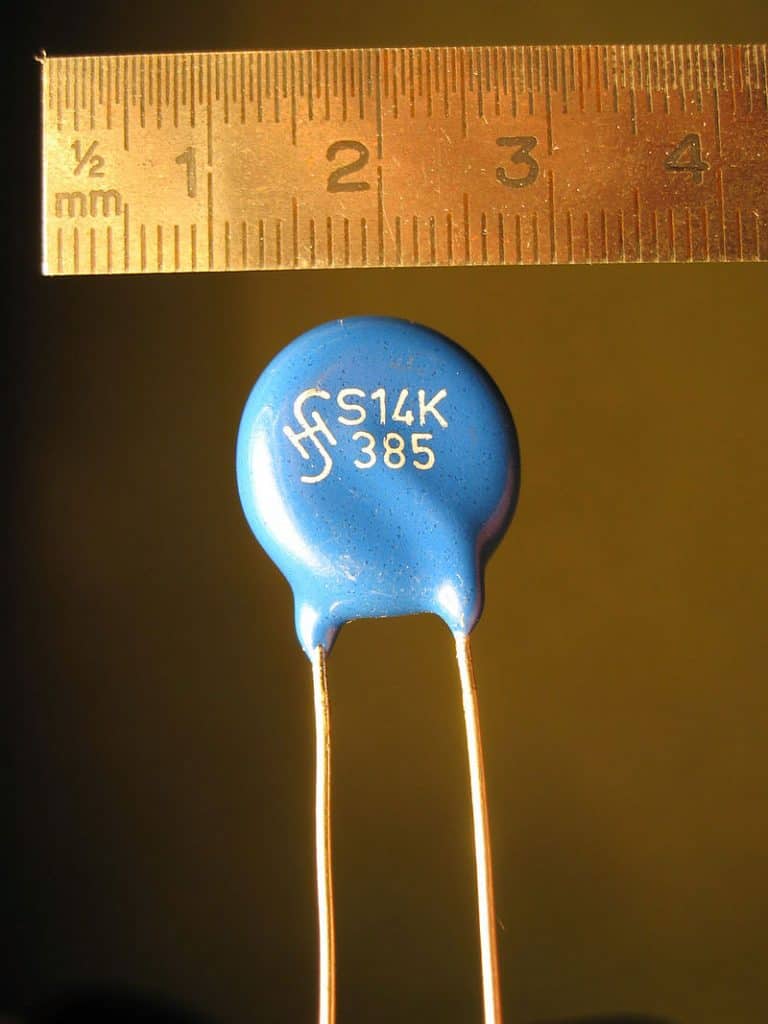In the installation of an electrical system, your main goal is to make it run without damage. It is not possible until you have chosen the correct type of protection. But, what is system protection? According to the IEEE, “System protection is the act of detecting the problem area in an electrical circuit. Furthermore, protection also requires isolating the affected area from the whole system.”
The protection policy will come in handy in case of damage due to a short circuit or power surge. However, the procedure is only applicable if you opt for suitable protective devices for your course. For that, you need first to inspect the ratings of your system, the overcurrent it may produce, and the type of protection it may need.
Get Your Free Sample!
Explore our custom services now. Email us at [email protected] for more details.
Electrical Protective Device– Protection Techniques
Following are some of the protection techniques you might look into before designing a system.
High-Voltage Transmission Network Protection
You will need to use protective devices such as relays to protect a high-voltage distribution system. In this way, you can preserve the power generating plant and reduce the electric hazards for the people.
The protection devices disconnect the system from the equipment damaged due to short-circuiting. Although using only one protecting mechanism will be enough, some parts may require additional protection. For example, transformers may need an extra set of relays as they may have different power ratings.
Zone Protection
To apply a zone protection mechanism, you will divide the power plants into five significant zones. These are
- Generators
- Transformers
- Transmission and distribution lines
- Motors
- Buses

Caption: Zones or protection in a simple power plant
Hence, you will use relays to detect the fault and circuit breakers to disconnect the device from the system to ensure safety.
Electrical Protective Device– Generator sets
You will need to attach a set of protective relays for the power alternators or transformers to save them from internal failures. Typically, an abnormal operation is infrequent in such systems. So The surge current might not activate the relays. Still, it is essential to protect these systems as their damage may result in heavy repairs or replacements.
Overload Protection
To avoid overloading, you will measure the current of a circuit and compare it to the predefined values with the help of a transformer. Here, you can perform a comparison based on two criteria.
- Is the measured current exceeding the threshold? (Instantaneous overcurrent)
- What is the behavior of the current on the current vs. time curve? (Time Overcurrent)
The above observations will determine whether the fuse or circuit breaker will operate and open the circuit or not.
Electrical Protective Device– Overcurrent/Overvoltage Protection
High currents may occur in a system and disrupt the normal functioning of a circuit. As the current surge accompanies high temperatures, it can also cause the wiring to melt down. So, you can protect the systems with miniature thermal circuit breakers to keep overcurrent problems at bay.
In addition to overcurrent, you can also have overvoltage in the system. It can be for a minimal period, mainly due to lightning and thunderstorm near a power plant. To apply for protection in such cases, you can use lightning arresters between the ground and the current lines. Additionally, you can also opt for Undervoltage and overvoltage relays.
Under voltage/ Under frequency Protection
Sometimes, the power plant is not producing enough voltage to support the connected device’s power needs. Also, if there is an overload on the system, it may cause the standard frequency rating to decline.
In such cases, the devices may start to draw excess current. Hence, you will need to use the protective devices to detect the less power supply and divide the systems until the balance is gained.
Electrical Protective Device– Reverse phase rotation Protection
An electric motor rotation is vital for the operation. So, it would help if you protected it from phase reversal using phase rotation relays. The relay works in the same direction as the motor, stopping the engine upon detecting the current in the opposite direction.

Caption: Anatomy of an Electric Motor
Electrical Protective Device– Earth/ Ground Fault
In a three-phase system, the current flow is in balance. However, if the current starts flowing towards the ground via a less resistant path in the circuit, it produces an imbalance. Additionally, if the imbalance current exceeds its threshold value, the circuit breaker operates and breaks the course before any electrical damage.
Thus, you can use earth fault protection to sense the imbalance currently in the system on time. Also, you can restrict it two a set of transformers only (known as restricted earth fault protection).
Distance (impedance relays)
The distance protection technique checks for both the voltage and current surge. For that, it checks the ratio of voltage and current and compares it to a predetermined value. If the proportion is more significant than the threshold, it opens the circuit with the help of protection devices.
Distance protection is helpful in the case of lines longer than 10 miles. On the contrary, if the lines are less than 10 miles long, they will be challenging to coordinate. In that case, you can use other protection mechanisms such as current differential protection.
Electrical Protective Device– Differential Protection
Differential protection aims to compare the current values to detect the problems in an area. It is one of the most important and widely used protection methods. In differential protection, the transformers divide the primary current into small secondary currents. These secondary currents are the input of the relay panel and decide whether the relay will operate or not.
When things are every day, all these small currents add up and result in zero. Thus, they do not activate the relay device. But as the internal fault occurs, the current will add up and flow through the relay, causing it to break the circuit.
Backup Protection
The protection techniques aim to disconnect and remove the damaged portion. But, as the primary protection fails, the backup guard will come to the rescue. There are two types of backup protections, remote and local.
In the remote backup protection technique, you will remove all the electrical equipment to repair the fault. On the other hand, the local protection will only remove the affected portion and clears the damage to equipment.
Electrical Protective Device– Low-Voltage Networks
Unlike a High voltage network, the protection in Low-Voltage Networks is not complex. You can use simple fuse or circuit breakers of low ratings. With their help, you can repair both the earth fault and overload damage.
Thermal Protection
There may be some cases where the mechanical friction or overload will cause the system to overheat. This overheating can cause severe damage to insulation and the machinery. Therefore, you can use temperature-sensitive protection devices to detect the excess heat and disconnect the devices in a circuit or activate the alarm.
Cybersecurity
As the control systems switch to the internet of things (IoT), they become more vulnerable to cyberattacks every day. Mainly, the hackers aim to cut off the power supply of a whole area or damage it. Thus, such wide networks of commercial as well as household equipment need appropriate cybersecurity methods.
Get Your Free Sample!
Explore our custom services now. Email us at [email protected] for more details.
Electrical Protective Device– Circuit Protective Devices
Protective devices like fuse or relay are a must if you want to apply any of the above protection techniques. Investing in a piece of good protection equipment will save you from electrical hazards and reduce the replacement resources.
However, it is crucial to consider that every circuit has its own needs of protection. Also, there may be some circuits where there is no safety need at all. It is not good to attach a relay or circuit breaker panel in such systems as it is useless. So, you should first examine the type of the system, check each protective device and then go for a better option.
Electrical Protective Device– Different Types of Protective Devices
To choose an appropriate device for your system, you have to know each of them. The most commonly used protective devices are
Fuse
Fuse is a safety device that protects the system from overcurrent. The metal strip in the fuse melts when a heavy current passes through it. As the metal strip liquefies, it disconnects the design from the power source and avoids electric shock.
There are different types of fuses available in the market. The choice depends on the ratings, area of application, and breaking capacity.

Caption: A mini time-delay fuse
Circuit Breakers
The circuit breaker is a type of electrical switch that opens on the passing of excess current. It stops the flow of current in the circuit and protects the connected equipment. You can operate the circuit breakers either manually or automatically, depending upon your need. Also, it is available in different sizes and supports different current thresholds.

Caption: A miniature two-pole circuit breaker
Electrical Protective Device– Poly Switch or Resettable Fuse
Unlike a simple fuse, a Resettable Fuse does not need plugs strips. Instead, it uses the polymeric crystal matrix filled with black carbon particles between the fuse terminals. Upon high current flow, the polymer expands and changes from crystal state to amorphous. It cuts off the flow of current in the system and raises the resistance in the line.
However, the current flow is not entirely cut. Instead, a little current leakage occurs, helping the temperature maintenance. As the temperature reduces, the polymer gains its crystalline state, and the current will reconnect.

A Resettable Fuse
Residual current device
You can use a Residual Current Device (RCD) in your homes for safety. It detects current surge and cuts the supply in 10 to 15 milliseconds. However, it cannot replace the use of a fuse against overloading or short circuit. So, you can only use it for enhanced protection.

Caption: A Residual Current Device
Inrush Current Limiter
Inrush current limiter stops a large amount of current from flowing through the system, causing damage. It is a high-resistance protective device that prevents the fuse or circuit breakers from blowing out. Thus, you will place a current limiter before a fuse in a circuit.
Lightning Protector
To apply for lightning protection in a building, you can use a rod or conductor. The rod is mounted on top of the building that connects to the grounding rod. When lightning strikes, the metal rod conducts the charges and passes it to the ground through the wire. In this way, you can save the power plants or other buildings from electrical hazards due to lightning strikes.

Caption: Lightning protection Mechanism
Electrical Protective Device– Metal Oxide Varistor
A varistor is an electrical device whose resistance varies with the change of voltage. That is, when the voltage is minor, resistance increases and vice versa. With this functionality, they become appropriate to keep the systems safe from excess current flows. A metal oxide varistor is the most common type of this device.

Caption: Metal Oxide Varrasitor manufactured by Siemens and Halske AG
Gas discharge tube
A gas discharge tube comprises electrodes that you will place inside a gas-filled box. Here, you will use a gas that can efficiently conduct the electric current and starts to ionize. An expulsion lamp is an example of a device using gas discharge tubes.

Caption: A Fluorescent Bulb
Electrical Protective Device– Ground Fault Circuit Interrupters
Ground Fault Circuit Interrupters or GFCIs detect the problems within the electric system and cut off the power immediately. It works on the same principle of comparing the currents on the neutral side and the live wire side. If the slightest difference occurs, it trips the circuit. Also, it does not need replacement after every electrical surge.

Caption: A Cord Connected GFCI
Arc Fault Circuit Breakers
There may be a case where the current does not exceed a specific limit, and the fault occurs. In these cases, there may be the presence of arc flashes in the system. Regular protective devices are not designed to detect the arc fault. Thus, you need to place an Arc Fault Circuit Breaker AFCI in a system. For every Arc flash rating, you can use a specific AFCI for maximum protection.

Caption: An Old generation AFCI
Electrical Protective Device– Surge Protector
A surge protector can keep your appliances safe from sudden spikes in the current level. Although it usually looks like power strips, yet they can offer much more surge suppression. You may get affordable surge suppressors as well. Still, they will be expensive than the power strips as they are the best choice for high-end devices.

Caption: A Power strip with a built-in surge protector
Electrical Protective Device– Tamper Proof Receptacles
If you are a toddler parent or you own a facility dealing with children, receptacles are an excellent choice. It stops the electric current from flowing through the same wall outlet. Thus, the children cannot get an electric shock even if they try to insert their finder or a pin in a socket.

Caption: Men working in appropriate safety clothes
Electrical Protective Device–Things To Consider While Using Protective Devices
As the Electronic Code of Federal Regulations states;

Caption: A few volumes of the CFR at a law library (titles 12–26)
- You have to install the protective devices on all electrical circuits unless there are no hazards in them.
- Each type of circuit requires different protective devices, so choose one according to the rating.
- If your protective device is trip-free, it should have a manual restoring mechanism to reenergize it.
- In the case of a vulnerable system, you must know the location of each protective device so that you can replace it on time.
- As you will need to replace the safety device often, you should have the spare pieces available all the time. It ensures that the circuit is not deactivated for a long time.
Conclusion
Electric protection is one of the essential studies that help in designing a safe circuit. It requires the knowledge of several protection techniques and their methodology. You have to see the type of protective equipment a method uses. Moreover, you will choose the protection device according to the ratings of a system. Here at Cloom, we offer custom wiring assembly with attention to detail. To avail of our services, contact us now.
Get Your Free Sample!
Explore our custom services now. Email us at [email protected] for more details.



